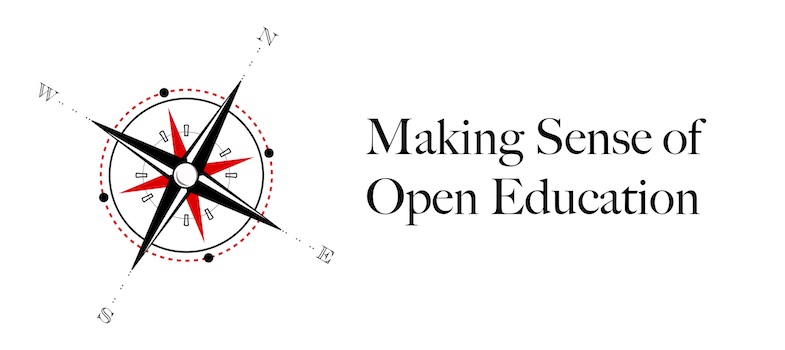From the library perspective
I have worked at an academic library for the past 12 years. My various roles have touched on issues around copyright, usage rules, etc. I have gone through a lengthy process of interrogatory questions with collective agencies and seen efforts to embrace more accessible online resources for student learning materials. A concerning trend I am seeing is instructors utilizing poor quality online materials even in cases where a single quality commercial item is available which does a better job of conveying the information to the student. I feel it is going to be challenge to educate instructors the difference between high-quality open access materials and “stuff they can find for free online and cobble to together in to course materials”. Efforts like BC Campus Open Textbook can help show the teaching community what is possible to build for the world learning community.
My work in libraries has equipped me an ability to communicate with instructors and course designers about what materials they really need/want and trying to present them with a variety of options. I wonder what how other people deal with balancing quality vs. openness in recommending resources for others.
Hi Adam, the problem of quality in online course design is complex for sure. If your institution does not provide appropriate compensation (through time release or fiscal compensation), and provide some support staff (instructional designers for example), then it's difficult for educators to know how to design, and what resources they might use.
One solution is to demonstrate the quality of open educational resources (open textbooks if that's useful) by having some in the library for educators to put their hands on and view. The OpenStax collection for example. I've heard it called "an open textbook petting zoo." It might help for your instructors to see the materials in print form.
There are so many great quality resources available in many disciplines, particularly first-year, high enrolment courses. Perhaps you and your team can highlight and celebrate good work by instructors on this front. If there's a way to get students involved as well, that can be good leverage for change.
- Jump to: Parent to post 1
- Permalink to post 2
Librarians unite!
Hi Adam:
I haven't formally practised as a Librarian since my Master of Ed Tech and moving more to Curriculum Design, but I remember the frustrations well. Even moving instructors to ACC and away from the pricey publishers was an uphill battle. On thing that continues to perplex me, with the move to online learning faculty are up in arms about their academic freedom. However, these were always the same people buying publishers' products hook, line, and sinker (lecture notes, online activities, assessment, etc.) It always struck me that this packaged content was a far greater blow to their academic freedom than delivery modality.
I wonder if part of the win might not be in the balance between quality and openness, but in showcasing the agency (re)gained when faculty take what's open and improve the quality and customization for their learners | courses?
Now, to the more practical... You mention our partner BCCampus. eCampusOntario has mirrored its library as well as supported creation (2 dozen or so new textbooks coming soon) and adaptation of those resources for the Ontario context. A next step is to build an open repository and key to that repository will be peer and student reviews of the content. There will eventually be opportunities for more formal assessment (e.g., ACHIEVE rubric) as well an the more informal star rating with comments.
I just returned from an OER summit in Amherst MA and OER quality was a steady stream in the conversations. It would be wonderful if post secondary institutions from Ontario | Canadian | beyond could follow along the path set by the Learning Registry in the States. A first hurdle is a common structure to share all the wonderful resources among platforms i.e. common metadata. First you need as many eyes on the resources as possible and then, by adding a (somewhat) standard assessment layer, better notions of quality and relevance could be revealed.
These points connected in my head, not sure they connect here, but...
- Jump to: Parent to post 1
- Permalink to post 3
I like Jenni's idea of textbook petting zoo. It's good start with OpenStax materials because they literally look and feel like what most are used to.
- Jump to: Parent to post 1
- Permalink to post 5
